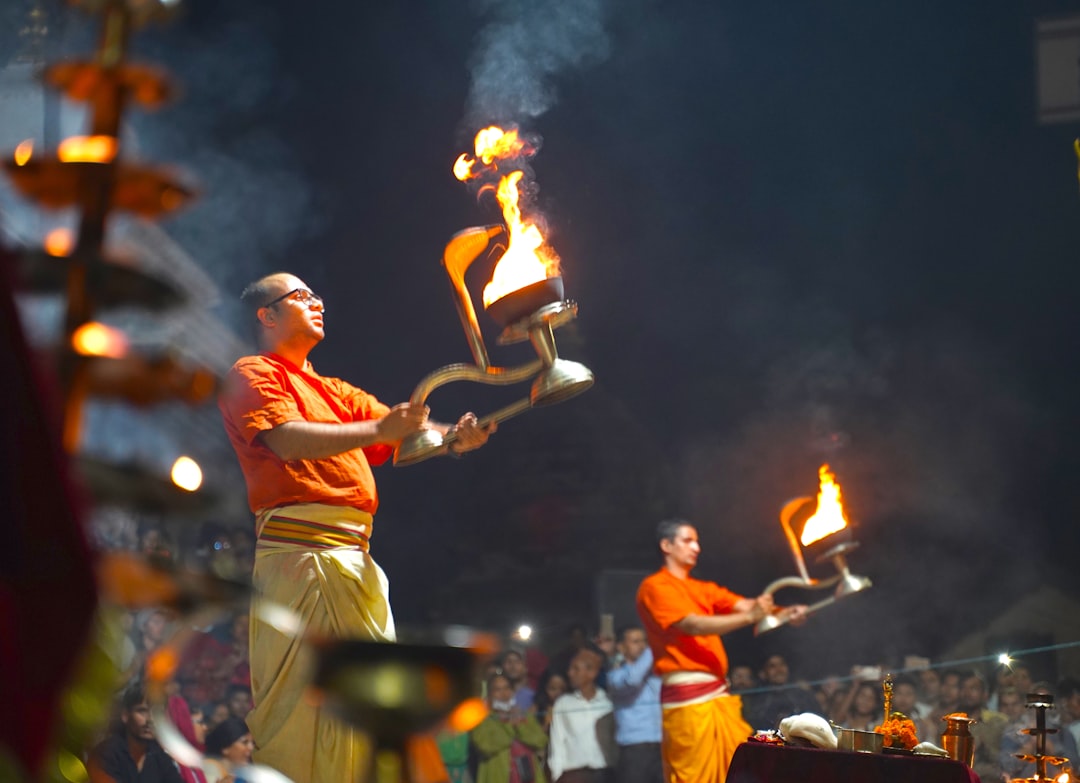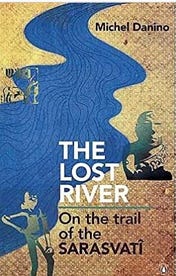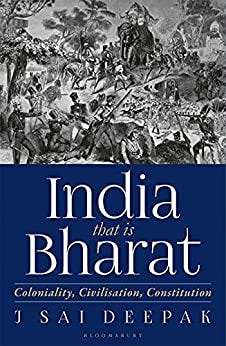
In Vikram Sampath’s book “Bravehearts of Bharat: Vignettes from Indian History,” he points out the significant issues within Indian historiography. The history we learn in schools, often centered on Delhi, tends to overlook the genuine stories of Indians. Instead, it spotlights foreign invaders and their victories. The narrative presented suggests a constant series of failures, implying a lack of bravery on our part. Every discussed battle ends in defeat, portraying us as merely a chain of losers. Notably absent is any mention of resistance from our side, almost as if they want us to believe our nation was filled with individuals like Raja Ambhi, who meekly submitted to Alexander of Macedonia.

When opportunities arise for cultural revival or correcting civilizational wrongs, Indian Left historians intervene to prevent it. This was evident in the debate about whether the Babri structure was built on top of a mandir at Janmabhumi. The Left historians swiftly entered the scene. Initially, they refused to acknowledge that the Babri structure was built on top of a temple. Later, when evidence surfaced against that claim, they shifted to asserting it was anything but a Hindu temple. With the temple set to be inaugurated on Jan 22, 2024, it becomes crucial to know the names of these Left historians and understand their actions in obstructing the construction of the Ram temple at Janmabhumi.
Some Historians are More Equal Than Others
In his memoir, “An Indian, I am” K.K. Muhammad, the ASI archaeologist who participated in excavations with B.B. Lal, explores the profound significance of Ayodhya for Hindus. “The Ram temple is to a Hindu, what Mecca and Medina are to a Muslim. A Muslim cannot imagine both these places under the control of another religion. Muslims should feel the pain of a Hindu, whose religious places are under the control of another religion, even though they live in a Hindu-majority country. Hindus believe Babri Masjid is Ram Janmabhoomi. This place has nothing to do with Prophet Muhammad. It relates only to Babar. So why should there be such a fight over this place?”

Since the 1980s, Left historians have been leading a campaign against the Rama temple, contending that Rama worship emerged in the eighteenth or nineteenth century, positioning it as a post-Babar phenomenon. They also challenge the historicity of Ayodhya in Valmiki’s account, dismissing the present-day identification of Ayodhya as Ramjanmabhumi as a matter of faith. This narrative clashes with K.K.Muhammad’s portrayal of Ayodhya’s sanctity, deepening the divide between perspectives on this historical and religious site.
The first argument of the Left historians was that Babar did not demolish any temple.. Their counterargument posited that the Babri structure emerged on virgin land without prior temple demolition. In their fantasy world, Babar deliberately bypassed existing temples, procured new land, and erected a mosque. This stance, a strategic move to hinder any potential settlement between Hindus and Muslims, necessitated the outright denial of a temple’s existence beneath the Babri structure. For them, the absence of a temple underneath would settle the case definitively.
However, their narrative faced a pivotal challenge well before the 1992 demolition. B.B. Lal’s earlier excavations in Ayodhya uncovered a pillared structure dating back to the 11th century. The brick-built pillar bases were marginally larger than the fourteen black stone pillars within the Babri structure. The carvings on these pillars followed the Pratihara style from the eleventh century CE. This archaeological revelation effectively dismantled their assertion that the Babri structure was erected on clean ground.
Once the first argument by the Leftists was demolished, their second argument was that the excavated structure cannot be a temple.
.The Leftists harbored a strong aversion to the brick-pillar-indicated-mandir theory. Consequently, they resorted to a dubious strategy of concocting alternative explanations. They suggested the revealed structure might have been an ordinary building or a hall adjacent to a mosque. According to them, the carvings could be attributed to a domestic house, proposing that the excavated structure could represent anything—perhaps even a Starbucks—but definitely not a temple.
As the Court ordered excavations started, the evidence supporting the existence of a temple continued to surface. This compelling proof included the Nagari-scripted letter “Shri” on a black stone pillar, the identification of the temple’s plinth beneath the boundary wall, and the discovery of a substantial stone adorned with intricate floral motifs. The most decisive piece of evidence came in the form of a stone slab measuring 5×225 ft, bearing 20 lines of inscriptions referencing Bhargava Parasurama, Ayodhya, and Vishnu’s incarnations. This accumulation of concrete archaeological findings served to counter the Leftists’ speculative and dismissive claims about the nature of the excavated structure.
As the excavations progressed, revealing figurines and stone architectural fragments such as the amalaka, ghata–pallava base, kirtimukhas, and other elements, the unmistakable conclusion emerged that the structure beneath Babri was not of Muslim origin. Responding to mounting evidence, Leftists shifted their narrative, asserting that it was, in fact, Buddhist and not Hindu. This shift in focus demonstrated a steadfast commitment to denying the possibility that it was a Hindu temple that had been demolished. However, as evidence accumulated, the Leftists found it increasingly challenging to maintain their position.
Ultimately, when confronted with artifacts like the Kalash, symbolic of Hindu temples, and representations of the crocodile (associated with the river Ganga) and the tortoise (associated with the river Yamuna), the Leftists had to concede that these items were non-Islamic. The sheer weight of archaeological findings debunked their claims, forcing a reevaluation of their narrative.
The ASI’s findings unveiled a massive structure dating back to the 11th and 12th centuries, over which another substantial structure was built between the 12th and 16th centuries. The Babri structure was completed atop this foundation. ASI noted the presence of a significant structure below Babri and identified sculptures depicting a divine couple, amalaka, lotus motifs, and a circular shrine with a pranala in the north—distinctive features of north Indian temples. These excavations provided undeniable evidence of a temple with a garbha griha.
Faced with the exposure of their inaccurate narrative, Left historians vehemently protested against the ASI, accusing it of producing a biased report. The clash between the archaeological evidence and the ideological stance of the Leftists intensified, marking a contentious chapter in the discourse surrounding Ayodhya.
The Confessions

One of the prominent Left historians, D. Mandal, initially posited an argument that the site had been utilized by Muslims since the Gupta period, citing two floods as reasons for abandonment. However, during court proceedings, he had to correct himself, acknowledging the absence of evidence supporting the flood claim. Despite a pranala, a crucial feature of temples for draining water on a Shiva linga, which would typically confirm it as a temple to Hindus, Mandal remained resistant to such interpretation.
On the other hand, Supriya Varma and Jaya Menon contended that the circular shrine was a Buddhist stupa. At the same time, attempts were made to label it as a Muslim tomb despite its apparent small size. Ifran Habib argued that the presence of lime, mortar, and surkhi pointed to Muslim construction methods, only to face dissent from his own party members. Jaya Menon countered by asserting that lime and gypsum had been used since Neolithic times, with surkhi dating back to the early Kushan period.
As the legal proceedings unfolded, it became apparent that the Left historians were espousing positions even more stringent than necessary. Notably, they argued that an old mosque or Eidgah lay beneath the Babri structure, a claim not asserted by the Muslims themselves.The courtroom drama highlighted the ideological fervor of the Left historians, whose interpretations often contradicted the archaeological evidence and diverged from the perspectives of the communities directly involved.
The Court keenly observed this evolving attitude of the Left historians. Initially, they asserted that the Babri structure occupied a site devoid of any religious significance or previous Hindu structures, disassociating it from the birthplace of Lord Rama. However, as successive excavations dismantled these claims, a noticeable shift occurred in their stance.
The Court noted that the excavations unequivocally demonstrated that the disputed structure did not stand on vacant land but had been in continuous use for centuries, serving a religious purpose. The critical question remained whether it was a temple.
The ASI’s findings revealed a massive structure beneath the Babri structure, featuring a 50 m-long wall and seventeen rows of pillar bases. The Leftists contended that it was a Muslim structure wrongfully claimed as Hindu, asserting it could be Buddhist, Jain, or Muslim but not Hindu. The bias against anything Hindu was palpable. When faced with the pillar bases, they went so far as to accuse the ASI of fabrication. This accusation stunned the Court, given that all excavations were conducted in the presence of plaintiffs and court-appointed observers. The Court rightfully deemed the Leftist arguments “thoroughly hollow.” These were the same pillar bases initially identified by B.B. Lal in 1976-1977 and later confirmed by archaeologist K.K. Muhammad. The Court firmly rejected the insinuation that the excavation lacked fidelity, highlighting the unwarranted nature of the Leftists’ allegations.
As the weight of evidence mounted against them, confessions from the Left historians began to emerge. One admitted to relying solely on newspaper reports and hearsay for knowledge about the disputed site, confessing to not having read Babarnama or any material on the Babri Mosque. Another self-proclaimed epigraphy expert acknowledged a lack of proficiency in Arabic, Persian, or Latin—the languages of the inscriptions in question. He initially identified the language as Persian in a flip-flop, later retracting and stating it was Arabic. Another historian, claiming literary evidence sufficed without visiting the disputed site, eventually conceded his inability to read Persian, Arabic, or Sanskrit, relying on his father-in-law for Persian translations.
The author of “The Disputed Mosque, a Historical Inquiry” admitted to lacking expertise in epigraphy or numismatics, archaeology, architecture, or any language. Another historian formed an opinion before reviewing the ASI report, while another with a Ph.D. sourced information from newspapers and magazines without reading any book by a historian.
One individual, who had never visited Ayodhya and lacked knowledge of Babar’s reign, disclosed being a card-carrying member of the Communist Party. The Court expressed surprise at the recklessness of these self-proclaimed expert historians and archaeologists who made irresponsible statements without proper study, research, or investigation, particularly in a dispute of such sensitivity.
The individuals involved in these confessions included Romila Thapar, D.N. Jha, Shireen Moosvi, Irfan Habib, D. Mandal, Supriya Varma, Jaya Menon, Sita Ram Roy, Suraj Bhan, Ashoka Dutta, Shireen Ratnagar, and R.C. Thakran. Hailing from institutions like Jawaharlal Nehru University and Aligarh Muslim University, some were card-carrying members of CPI and CPI(M), indicating that their stance was driven more by ideology than academic rigor—an ideology seemingly anti-Hindu. The confessions suggested a fear of judgment by Babar for not defending his iconoclasm.
Finally
Hindus have a profound connection to sacred spaces tied to geography, and the Ramjanmabhumi stands prominently among them as the revered birthplace of Lord Rama. Even after the demolition of the temple by Babar, accounts from Western travelers attest to the enduring reverence devotees held for this sacred ground. However, the forceful opposition from Left historians against acknowledging the existence of a temple hints at a more insidious motive—an apparent willingness to obstruct any resurgence of Hindu identity.
This distortion of history extends beyond academic debate; it represents a deliberate effort to implant seeds of inferiority within the fabric of our nation. In the post-independence era, as Indian Marxist historians took the reins, they perpetuated a relentless self-critique that went beyond the narrative of colonial oppressors. Instead, they engaged in a constant act of apologizing for our own history. Through their written works, they painted a picture where the erstwhile slave, long after the departure of the master, continues to self-inflict the whip—a poignant portrayal of the completion of the insidious work of colonialism. This historical manipulation becomes a tool not only to distort the past but also to shape a narrative that undermines a nation’s cultural pride and identity.
References
- Rama and Ayodhya by Meenakshi Jain
- Indian, I am by K. K. Muhammad
- Supreme Court Verdict on Ram Janmabhumi



















![The global contribution to world's GDP by major economies from 1 CE to 2003 CE according to Angus Maddison's estimates.[65] Up until the early 18th century, China and India were the two largest economies by GDP output.](https://varnam.org/wp-content/uploads/2017/08/Historical_Trends_in_global_distribution_of_GDP_China_India_Western_Europe_USA_Middle_East.png)
